Abstract
Lopez-Vidriero, M.T., Charman, J., Keal, E., de Silva, D. J., and Reid, L. (1973).Thorax, 28, 401-408. Sputum viscosity: correlation with chemical and clinical features in chronic bronchitis. A series of out-patient chronic bronchitics with severe airways obstruction was studied monthly over a five-month period from December 1970 to May 1971; volume, pourability, viscosity, and chemical constituents of sputum, the patients' FEV1·0/VC%, and viral antibodies were measured.
Mucoid sputum showed a highly significant correlation between pourability grade and viscosity.
The mean coefficient of variation for each feature studied was between 13 and 17% for pulmonary function tests and between 25 and 44% for sputum estimations.
Significant inverse correlations were found between sputum volume and viscosity, dry weight yield, neuraminic acid (NANA), and fucose, and a positive correlation with FEV1·0/VC%.
Linear correlations showed that mucoid sputum dry weight yield correlated with NANA and fucose concentrations, viscosity with NANA, dry weight, and fucose, in ascending order of significance. Mucopurulent sputum viscosity correlated to a much less degree with NANA.
Second order partial correlation coefficients showed that for mucoid sputum viscosity was affected equally by dry weight and fucose but not by NANA: for mucopurulent sputum fucose was twice as influential as dry weight while NANA showed an inverse correlation with viscosity (probably because of degradation of NANA).
Taking all patients and samples together, a significant inverse correlation was found between sputum viscosity and absolute values of FEV1·0 and FEV1·0/VC%, and between FEV1·0/VC% and NANA.
Seven patients showed considerable monthly changes in sputum viscosity, NANA, and fucose concentrations, which were high in December and in February or March, coinciding with peaks in atmospheric smoke and sulphur dioxide. No patient showed any evidence of viral infection.
Full text
PDF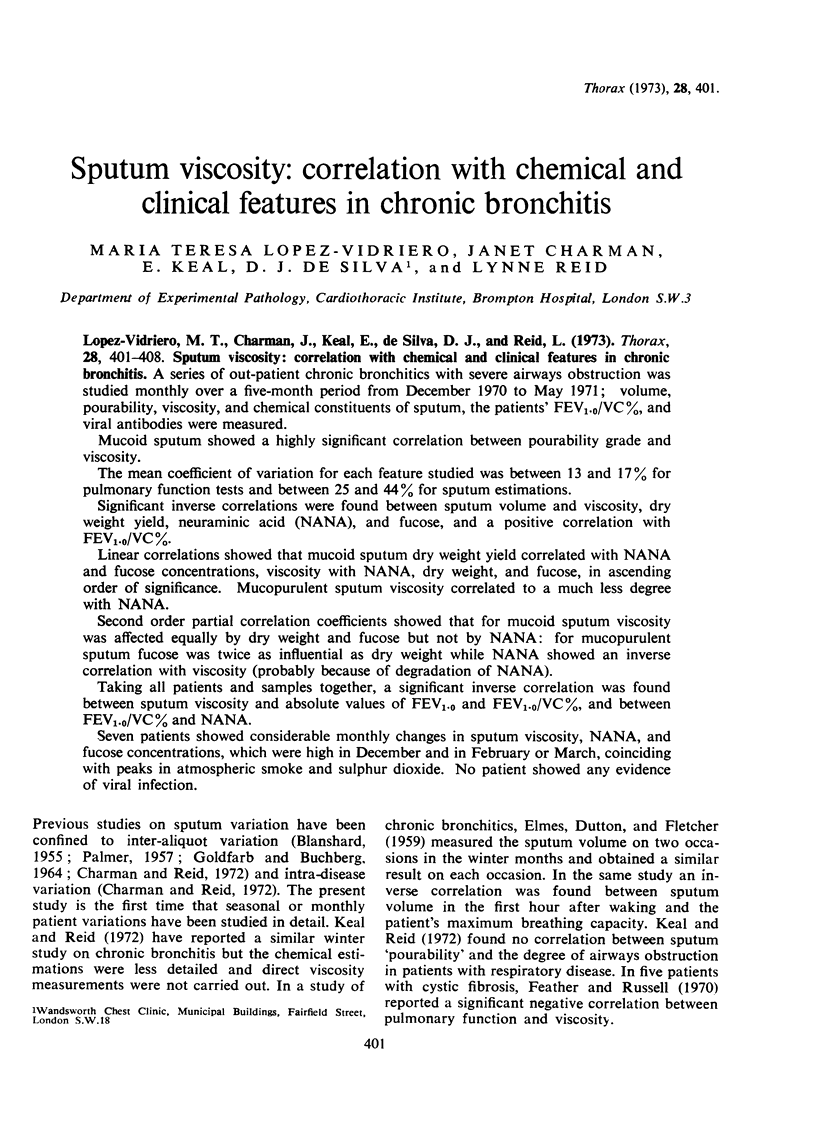
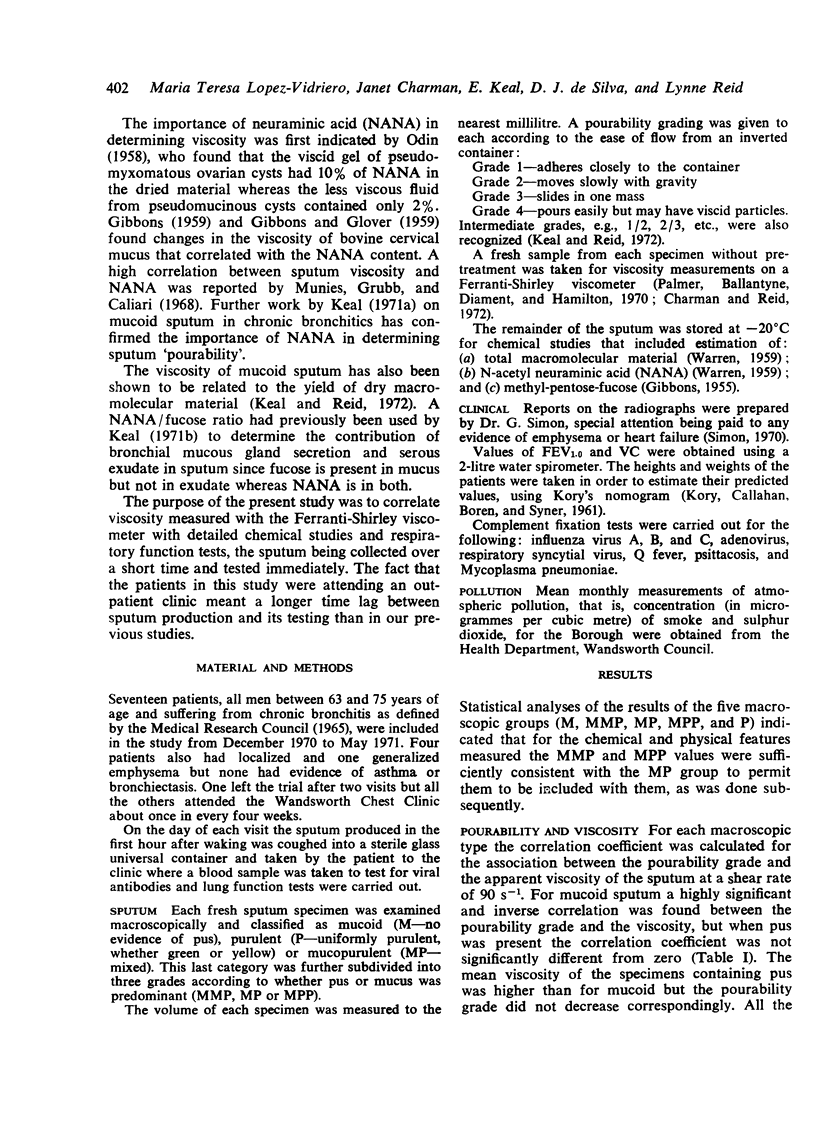
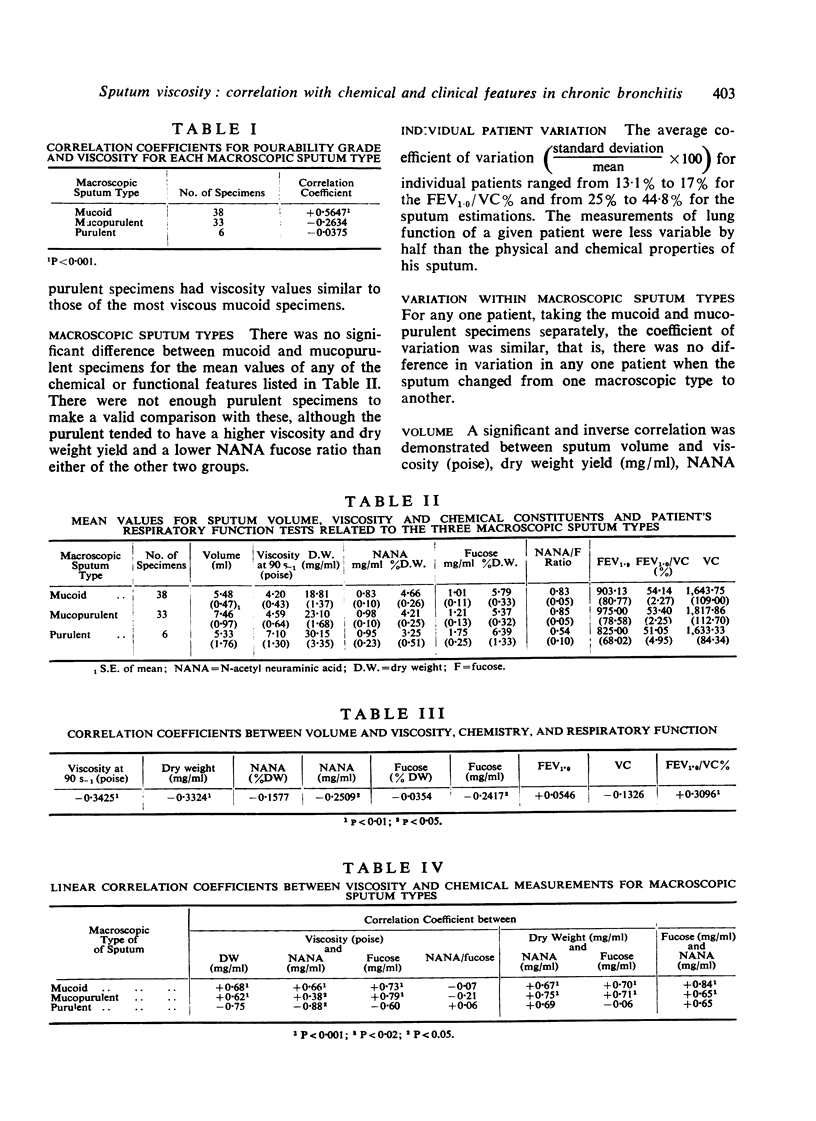
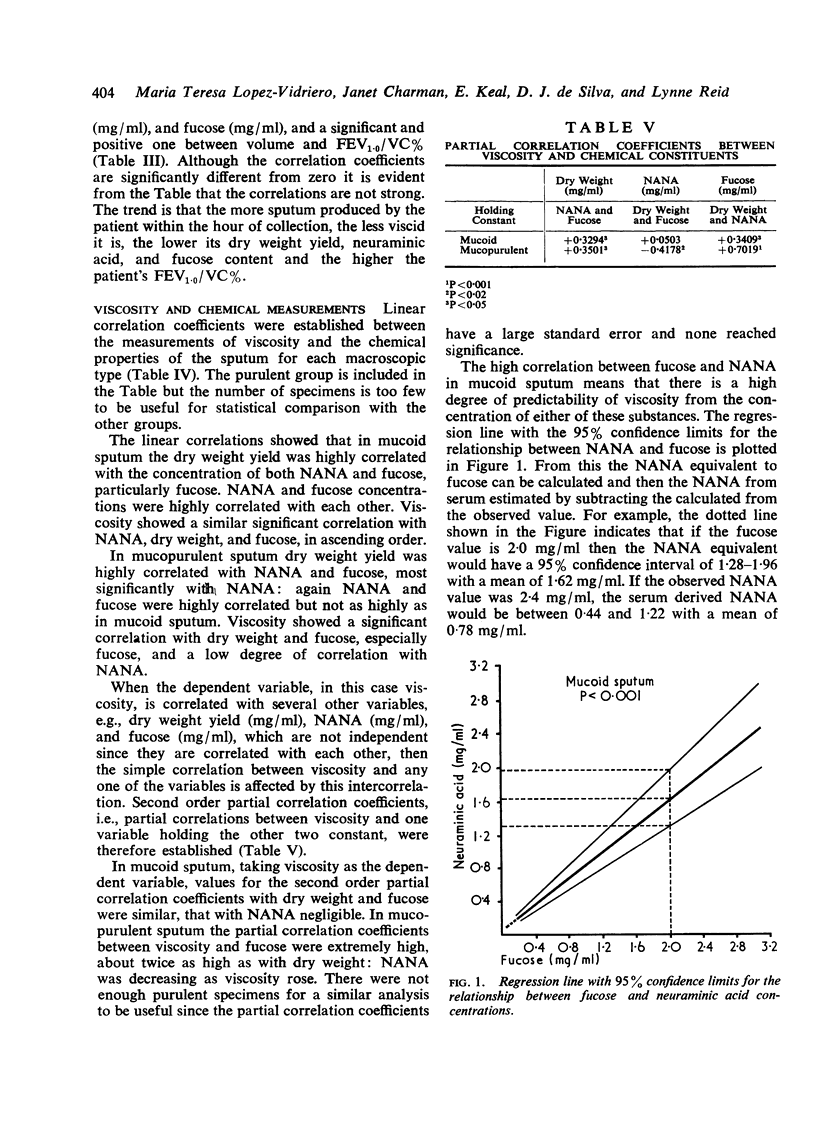
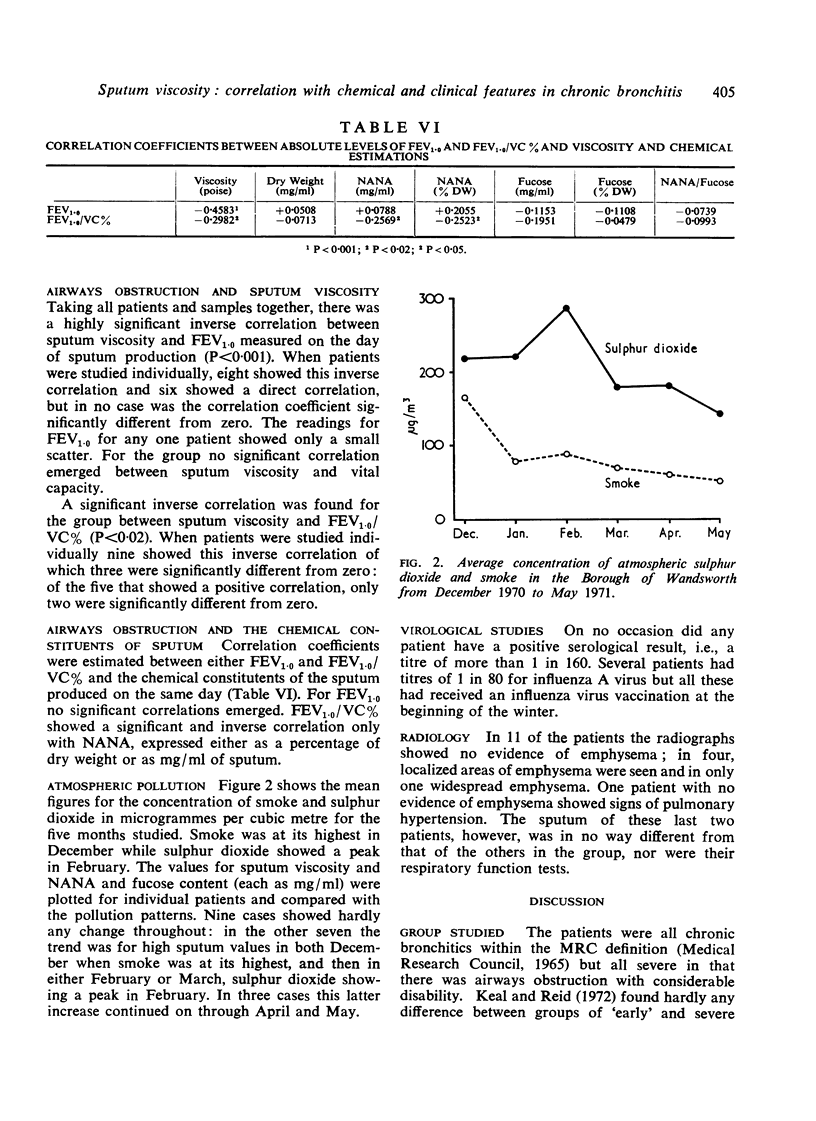
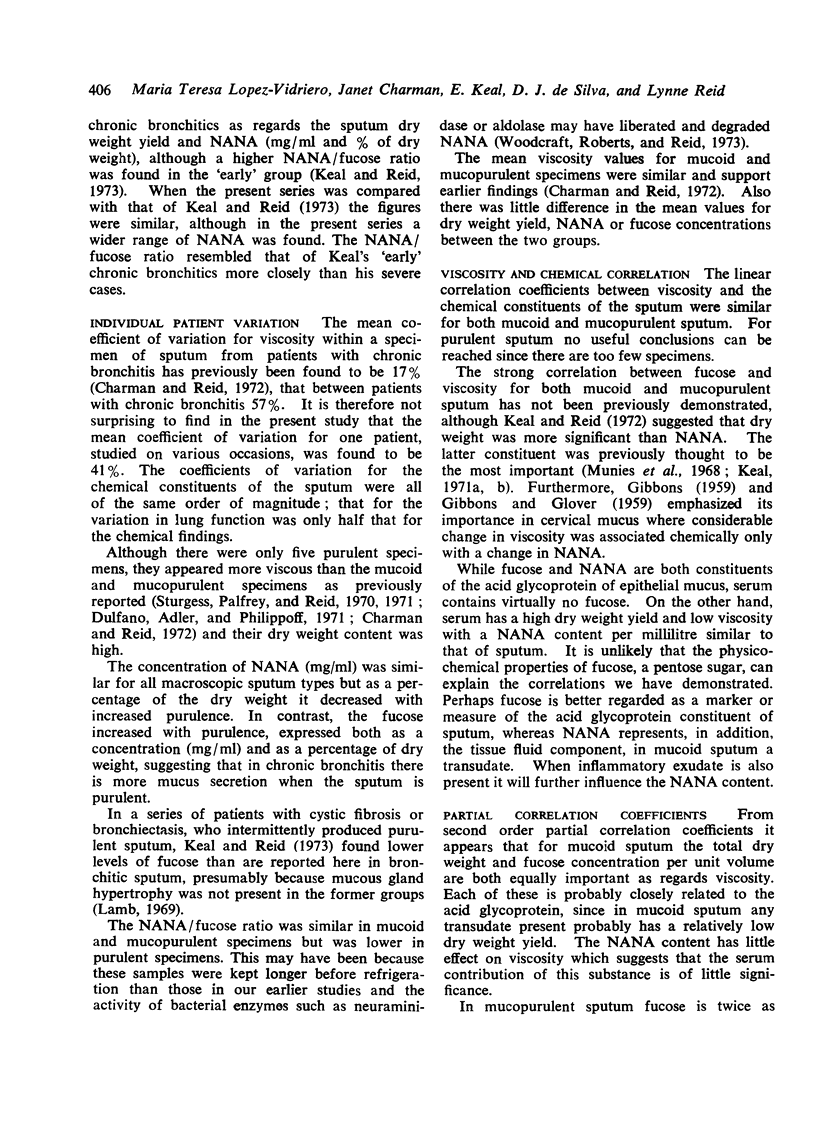
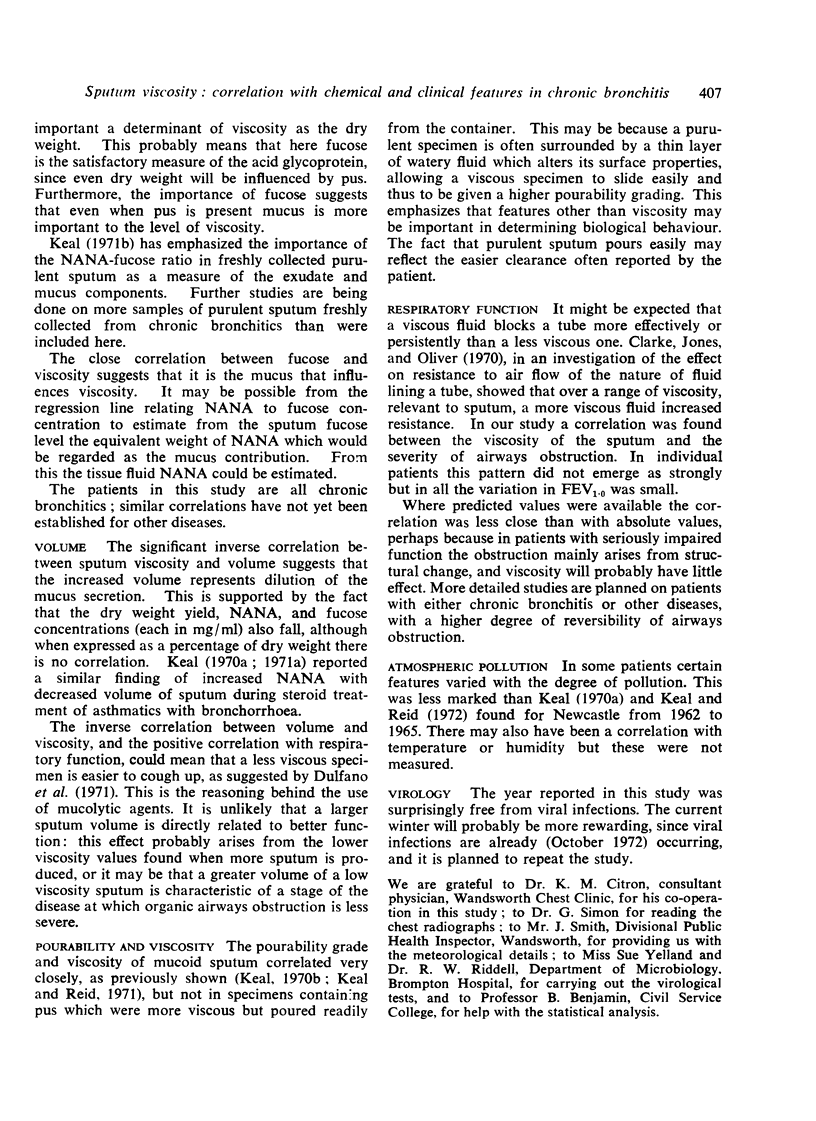
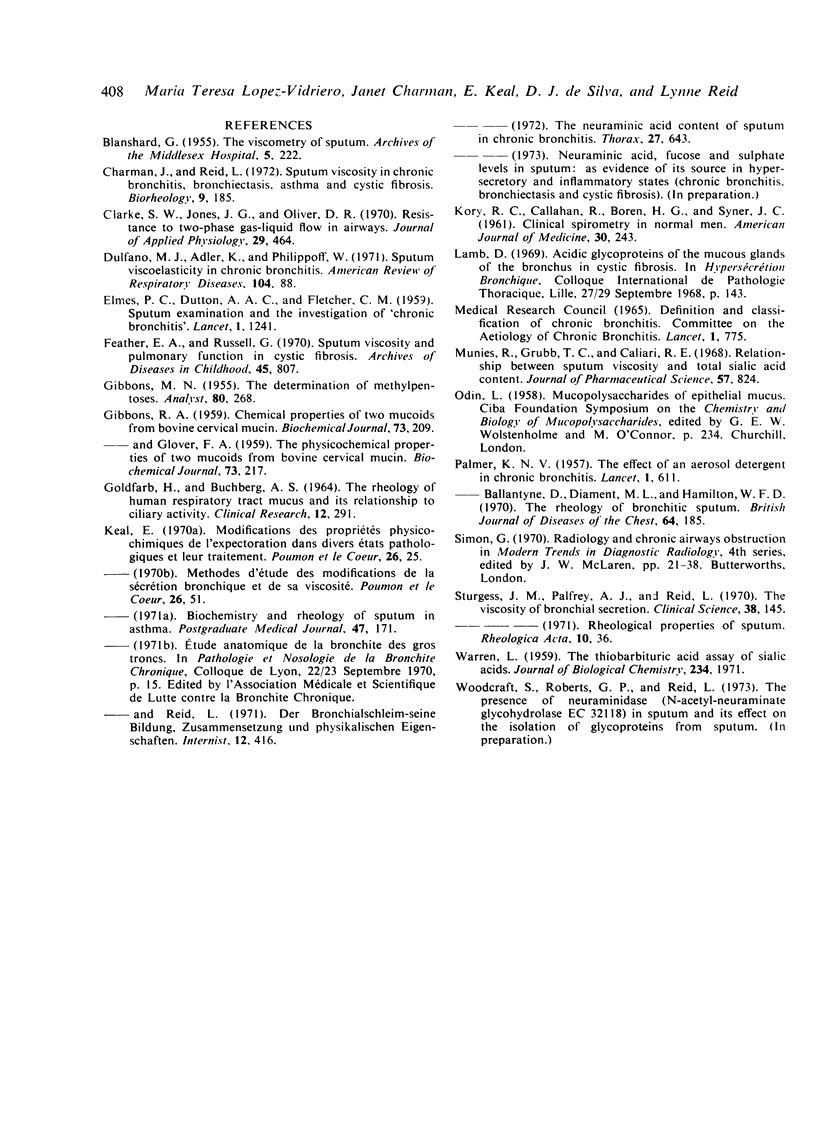
Selected References
These references are in PubMed. This may not be the complete list of references from this article.
- BLANSHARD G. The viscometry of sputum. Arch Middx Hosp. 1955 Oct;5(4):222–241. [PubMed] [Google Scholar]
- Charman J., Reid L. Sputum viscosity in chronic bronchitis, bronchiectasis, asthma and cystic fibrosis. Biorheology. 1972 Sep;9(3):185–199. doi: 10.3233/bir-1972-9310. [DOI] [PubMed] [Google Scholar]
- Clarke S. W., Jones J. G., Oliver D. R. Resistance to two-phase gas-liquid flow in airways. J Appl Physiol. 1970 Oct;29(4):464–471. doi: 10.1152/jappl.1970.29.4.464. [DOI] [PubMed] [Google Scholar]
- Dulfano M. J., Adler K., Philippoff W. Sputum viscoelasticity in chronic bronchitis. Am Rev Respir Dis. 1971 Jul;104(1):88–98. doi: 10.1164/arrd.1971.104.1.88. [DOI] [PubMed] [Google Scholar]
- ELMES P. C., DUTTON A. A., FLETCHER C. M. Sputum examination and the investigation of chronic bronchitis. Lancet. 1959 Jun 13;1(7085):1241–1244. doi: 10.1016/s0140-6736(59)90916-x. [DOI] [PubMed] [Google Scholar]
- Feather E. A., Russell G. Sputum viscosity and pulmonary function in cystic fibrosis. Arch Dis Child. 1970 Dec;45(244):807–808. doi: 10.1136/adc.45.244.807. [DOI] [PMC free article] [PubMed] [Google Scholar]
- GIBBONS R. A. Chemical properties of two mucoids from bovine cervical mucin. Biochem J. 1959 Oct;73:209–217. doi: 10.1042/bj0730209. [DOI] [PMC free article] [PubMed] [Google Scholar]
- GIBBONS R. A., GLOVER F. A. The physicochemical properties of two mucoids from bovine cervical mucin. Biochem J. 1959 Oct;73:217–225. doi: 10.1042/bj0730217. [DOI] [PMC free article] [PubMed] [Google Scholar]
- KORY R. C., CALLAHAN R., BOREN H. G., SYNER J. C. The Veterans Administration-Army cooperative study of pulmonary function. I. Clinical spirometry in normal men. Am J Med. 1961 Feb;30:243–258. doi: 10.1016/0002-9343(61)90096-1. [DOI] [PubMed] [Google Scholar]
- Keal E. Modifications des propriétés physico-chimiques de l'expectoration dans divers états pathologiques, et leur traitement. Poumon Coeur. 1970;26(1):25–34. [PubMed] [Google Scholar]
- Keal E., Reid L. Der Bronchialscheim--seine Bildung, Zusammensetzung und physikalischen Eigenschaften. Internist (Berl) 1971 Oct;12(10):416–425. [PubMed] [Google Scholar]
- Munies R., Grubb T. C., Caliari R. E. Relationship between sputum viscosity and total sialic acid content. J Pharm Sci. 1968 May;57(5):824–827. doi: 10.1002/jps.2600570522. [DOI] [PubMed] [Google Scholar]
- PALMER K. N. The effect of an aerosol detergent in chronic bronchitis. Lancet. 1957 Mar 23;272(6969):611–613. doi: 10.1016/s0140-6736(57)91071-1. [DOI] [PubMed] [Google Scholar]
- Palmer K. N., Ballantyne D., Diament M. L., Hamilton W. F. The rheology of bronchitic sputum. Br J Dis Chest. 1970 Oct;64(4):185–191. doi: 10.1016/s0007-0971(70)80014-6. [DOI] [PubMed] [Google Scholar]
- Sturgess J. M., Palfrey A. J., Reid L. The viscosity of bronchial secretion. Clin Sci. 1970 Jan;38(1):145–156. doi: 10.1042/cs0380145. [DOI] [PubMed] [Google Scholar]
- WARREN L. The thiobarbituric acid assay of sialic acids. J Biol Chem. 1959 Aug;234(8):1971–1975. [PubMed] [Google Scholar]


